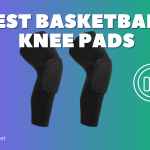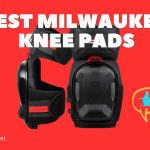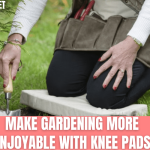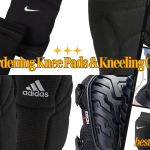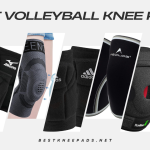If you’re someone who enjoys physical activities that involve jumping, running, or kneeling, then you know how important it is to protect your knees. Knee pads are a popular option for many athletes and workers, as they offer both support and protection. But have you ever wondered how knee pads actually work?
In this section, we will explore the physics behind knee pads and how they provide protection and support during physical activities. By understanding the principles of force distribution, energy dissipation, and joint stability, you’ll gain a better appreciation for the importance of knee pads in protecting your knees.
Key Takeaways
- Knee pads are essential for protecting your knees during physical activities.
- Understanding the physics behind knee pads can help you appreciate their importance.
- Force distribution, energy dissipation, and joint stability are key principles involved in knee pad protection.
- Cushioning and padding materials help absorb and distribute impact force.
- The design and ergonomics of knee pads contribute to their protective capabilities.
The Mechanics of Impact
When you engage in physical activities such as sports, your knees are subject to impact forces that can cause injuries. This is where knee pads come into play, by employing principles of force distribution and absorption to protect your knees.
Understanding the mechanics of impact is crucial in comprehending how knee pads work.
Imagine a scenario where you fall while playing basketball. The impact of the fall generates kinetic energy, which is transferred through your body and targeted towards your knees. Without knee pads, your knees would bear the brunt of this energy, leading to pain, swelling, and even sprains.
Knee pads work by absorbing and distributing this kinetic energy across a wider surface area, reducing the amount of force transmitted to the knee joint. This is achieved through the use of cushioning and padding materials that compress under pressure, effectively absorbing the shock of the impact.
By understanding the mechanics of impact, you can appreciate how knee pads protect you during physical activities. They are designed to minimize the risk of knee injuries by dissipating kinetic energy, providing cushioning and padding, and distributing impact forces across a wider surface area.
Cushioning and Padding
One of the critical components of knee pads is the cushioning and padding materials. Knee pads are designed to absorb and distribute impact forces, reducing the strain on your knees. The cushioning material is made up of foam, gel, or air pockets that act as shock absorbers. These materials compress upon impact and then bounce back to their original form, reducing the amount of force transmitted to your knees.
Padding, on the other hand, is used to provide extra support and stability to the knee joint. The padding is typically made up of reinforced materials, such as neoprene or polyester. It is placed around the knee joint to prevent any lateral movement that can cause injury.
The cushioning and padding materials in knee pads vary in thickness and density, depending on the level of protection required. Thicker and denser padding is commonly used for high-impact sports, such as basketball or volleyball, while thinner and less dense padding is used for lower-impact activities, such as cycling or yoga.
Wearing knee pads that do not have enough cushioning or padding can lead to knee strain, pain, and injury. In contrast, properly cushioned and padded knee pads can reduce the impact of external forces and provide the necessary support to avoid knee damage.
Joint Stability
When you wear knee pads, you may notice they provide additional support to your knees, improving your overall joint stability. This is because knee pads are designed with physics principles in mind that help stabilize the knee joint.
The primary mechanism by which knee pads enhance joint stability is through compression and pressure. Knee pads exert a small amount of pressure on the surrounding muscles and tendons, which provides additional support to the knee joint. Additionally, knee pads can limit the range of motion of the knee, preventing it from overextending or twisting in a harmful way.
Knee pads also help improve joint stability by reducing the risk of knee hyperextension, a common injury that occurs when the knee joint bends too far backward. Knee pads provide a physical barrier that limits the range of motion of the knee, preventing it from hyperextending and reducing the risk of injury.
Overall, the design of knee pads helps promote joint stability, reducing the risk of injury and improving overall performance. When you wear knee pads, you can feel confident that your knees are well-protected during physical activities that put stress on the joint.
Friction and Sliding
When participating in physical activities, it’s essential to maintain stability and avoid any unnecessary sliding or slipping. Knee pads are designed to increase friction on surfaces, preventing slips and falls and keeping you safe during your workout.
The physics behind knee pad design helps increase friction. The padding in knee pads is often made from materials that have a higher coefficient of friction, such as neoprene or rubber. These materials grip the surface, increasing traction and reducing the likelihood of sliding or slipping.
In addition to the materials used, the design of knee pads also plays a role in increasing friction. Some knee pads feature textured surfaces or non-slip materials on the underside of the pads to increase friction and keep them securely in place during physical activities.
By reducing sliding and increasing traction, knee pads allow you to move with greater confidence and stability, improving your overall performance and reducing the risk of injury.
Cushioning and Padding
When you engage in physical activities that require kneeling or crawling, your knees are subjected to significant amounts of force, which may result in painful injuries. Knee pads provide a layer of cushioning and padding, which play a vital role in reducing the amount of force transmitted to your knees.
The materials used in knee pads are designed to absorb and distribute impact energy, which helps reduce pressure on your knee joints. These materials include foam, gel, and other synthetic materials that allow for maximum shock absorption.
Knee pads provide a layer of cushioning and padding, which play a vital role in reducing the amount of force transmitted to your knees.
One of the most critical factors in knee pad design is the ability to disperse forces evenly to prevent any one area from experiencing excessive pressure. The padding is also strategically positioned to provide the highest level of protection to the knees’ most vulnerable areas.
In addition to providing cushioning, knee pads need to be flexible enough to allow a full range of motion without being too bulky or hindering performance. This feature is critical for sports that require frequent changes of direction, such as basketball or volleyball. The padding should compress and expand with your knee movements, ensuring maximum comfort and protection.
The cushioning and padding materials used in knee pad construction also play a vital role in reducing fatigue in the knee muscles. By reducing the amount of force transmitted to your knees, knee pads help prevent muscle strains and overexertion, allowing you to perform at your best for longer periods.
Energy Dissipation
Another essential function of knee pads is their ability to dissipate energy generated during an impact. When you land on your knees, the kinetic energy generated is transferred to the knee joint, which may result in painful injuries.
Knee pads are designed to convert this kinetic energy into other forms, such as heat or sound, thereby reducing the amount of force transmitted to your knees. The cushioning and padding materials in knee pads help absorb the impact energy, which is then dispersed evenly throughout the material, minimizing the risk of injury.
The energy dissipation ability of knee pads is a crucial safety feature, particularly in high-impact sports, such as skateboarding or BMX riding. Without proper energy dissipation, landing a trick could result in severe injuries, including broken bones or torn ligaments.
By providing cushioning and padding and dissipating energy, knee pads play a critical role in protecting your knees during physical activities. So, invest in a good pair of knee pads to minimize the risk of injury and enhance your performance.
Design and Ergonomics
When it comes to knee pads, optimal protection is just one piece of the puzzle. The design and ergonomics of knee pads are equally important in ensuring that they provide maximum support while remaining comfortable and secure.
The best knee pads are engineered to fit your knees snugly, without feeling too tight or loose. This ensures that they remain in place during physical activities, providing consistent protection and support. The right fit also enables a full range of motion, allowing you to move around freely without any restrictions.
Another key aspect of knee pad design is the choice of materials. The materials used must be durable enough to withstand the rigors of physical activity while remaining soft enough to provide adequate cushioning for your knees.
“The design and ergonomics of knee pads significantly contribute to their protective capabilities.”
At the same time, knee pads must also be breathable and lightweight, to prevent excess sweating and heat buildup that can be uncomfortable or even dangerous during intense physical activities.
When selecting knee pads, it’s essential to consider your specific activity and the type of protection required. For example, if you’re a basketball player, you’ll need knee pads that are designed to protect your knees from sudden impacts and hard falls. Conversely, if you’re a runner, you might opt for knee pads that provide support during long runs while also reducing the risk of chafing or skin irritation.
Ultimately, knee pad design and ergonomics play a vital role in determining their effectiveness in protecting your knees. A well-designed knee pad can provide optimal support and protection, enhancing your performance and reducing the risk of injury during physical activities.
Conclusion
Congratulations! You have now gained a comprehensive understanding of the physics behind knee pads and how they protect you during physical activities. By absorbing and distributing impact forces, providing cushioning, increasing joint stability, reducing sliding, and dissipating energy, knee pads play a crucial role in preventing knee injuries and enhancing performance.
Remember that knee pads come in different designs and materials, so it’s essential to choose the right ones for the type of physical activity you’ll be doing. Look for knee pads that fit comfortably and securely, allowing for a full range of motion while still providing optimal protection.
Whether you’re an athlete, a construction worker, or someone who enjoys doing outdoor activities, knee pads are an essential piece of protective gear. So, the next time you engage in physical activity, don’t forget to put on your knee pads and enjoy the peace of mind that comes with knowing your knees are adequately protected.

